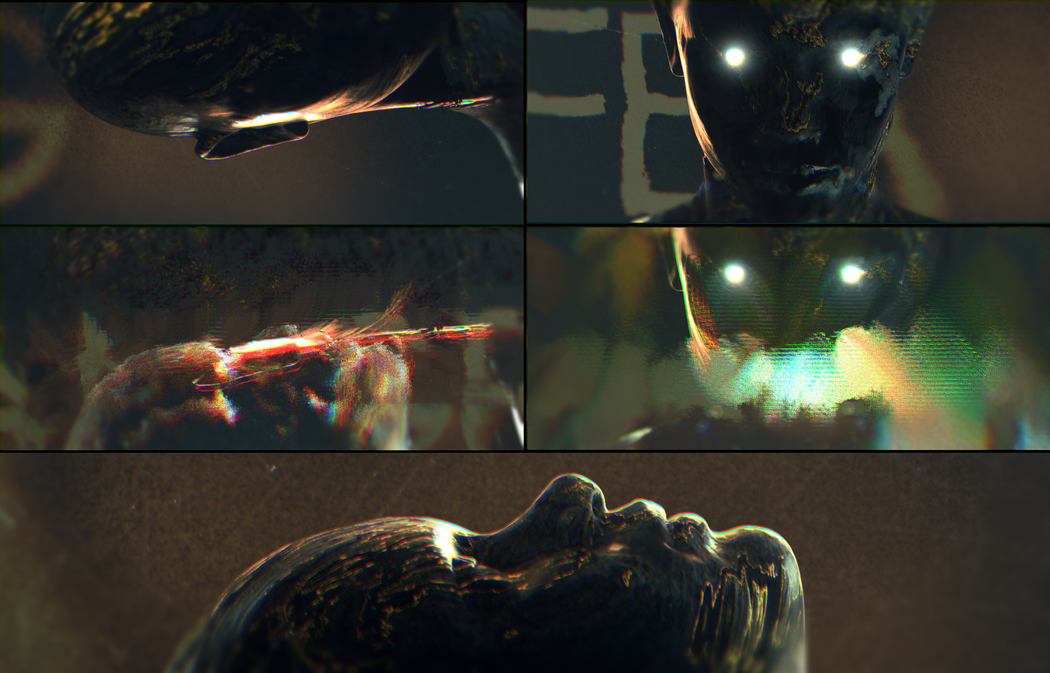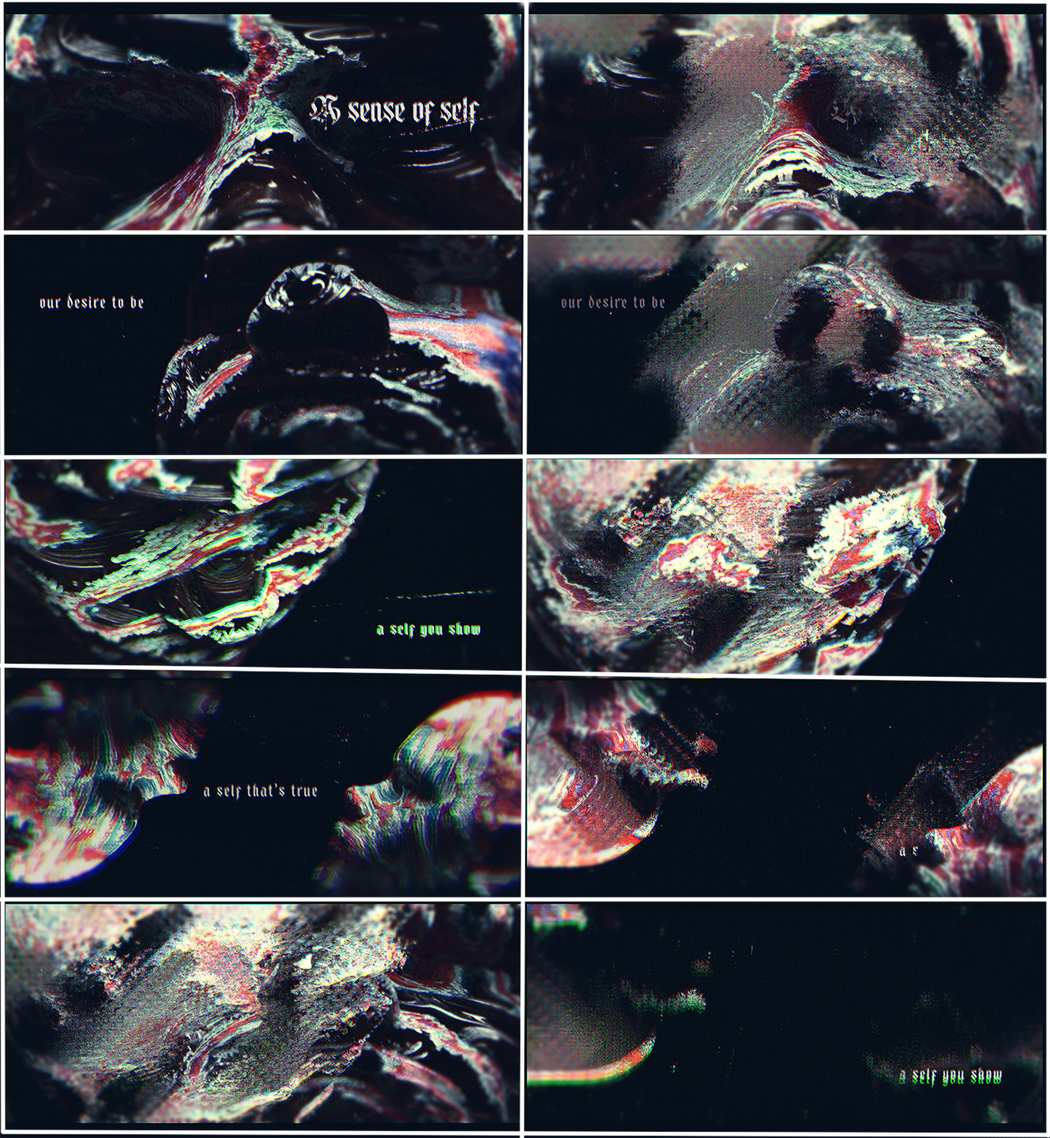Shamant Bagrecha
 Shamant Bagrecha | SIN Style frames
Shamant Bagrecha | SIN Style frames
Your work often bridges abstract digital forms with human perception. How do you decide what aspects of identity or connection to translate into visual metaphors?
I believe my work primarily stems from the experiences I’m navigating, the emotions I’m grappling with, and the aspects of myself I’m striving to comprehend. It’s not born from self-obsession, though it might sometimes appear that way, but rather from a desire to articulate those feelings and trace their origins. From the raw grip of anger and fear emerged S I N S, and from waves of existential dread and a quest to unravel the essence of our social bonds came S E L F.
TouchDesigner seems to be central to your practice. What drew you to this tool, and how does it shape the way you think about art-making?
Actually, TouchDesigner is a tool I’ve only recently begun exploring—my mainstays remain Blender and After Effects. That said, I can pinpoint exactly what pulled me in: my first spark for motion design ignited from a deep fascination with audio-synced visuals. TouchDesigner elegantly fuses the capabilities of those two programs into a single, seamless workflow, transforming it all into real-time magic. It’s incredibly versatile, brimming with boundless potential for anyone willing to invest the time and curiosity to unlock it.
In Concept-01, you used a face layered with shifting textures to signify transformation. What does the face symbolize for you, and why was it important for this project?
In that project, the shifting textures of the face symbolize fleeting emotions that we go through. And it was important to me, as an immigrant, someone away from my home and family, it brought in a lot of inexperienced emotions and being in my early 20’s I went through a huge shift in life and perspective. I felt scared and lost. I was in search of any essence of meaning I could find to justify my existence. And it came along with this huge wave of emotions I had never experienced before. This continuous theme within the theme tries to express that overwhelming emotions we go through.
 Shamant Bagrecha | SELF Style frames
Shamant Bagrecha | SELF Style frames
Your work frequently deals with questions of selfhood and purpose. How do your own personal reflections on these themes influence the direction of your projects?
My work often grapples with selfhood and purpose because those themes have been constant undercurrents in my own inner world, shaping not just what I create but how I approach it. From a young age, I’ve been haunted by that big, childlike question: What is our purpose as a species, and why do we feel these raw, inexplicable things? It’s not abstract philosophy for me—it’s personal, woven into moments of doubt, joy, or disconnection that demand exploration. Visually striking ideas always catch my eye first, pulling me in with their “cool factor,” but they become a canvas for those deeper reflections. I layer in the emotions I’m wrestling with—existential unease, the ache for connection, the search for meaning—and let them steer the project’s direction. Take S E L F, for instance: it started with mesmerizing, morphing textures that fascinated me aesthetically, but my reflections on isolation as an immigrant in my early twenties turned it into a meditation on fragmented identity and the fragile threads of human bonds. In essence, these personal musings aren’t just influences; they’re the compass that transforms a spark of visual intrigue into something probing and profoundly human.
Collaboration appears in your practice, especially in your exhibition with your partner. How does collaboration change or expand the meaning of your work?
Collaboration is key in my eyes. Especially within art, understanding how one thinks and feels, is especially understood with art, the connection it beings is very important, as it a peek into the others mind, even if it’s only a tiny hole into their universe. Since a lot of my personal work comes from trying to understand human connection and how we all experience different relationships, differently, collaboration is another way to understand such an experience.
The integration of sound and motion in your art creates immersive experiences. How do you see sound functioning as part of your storytelling?
To me sound plays a huge role when it comes to experiencing something. Without the sound to set the mood, we don’t fully grasp what is going on. It’s like watching a movie without the score. The visuals do half the job, which is fully captivating the viewers attention, and the sound does the other half, of holding that attention and making you feel what you see.
You mention threads and fibers as metaphors for human bonds. What inspired you to combine physical materials with digital systems?
This one particularly, is for the gallery show my partner and I are planning together. She is a Fibers artist, and I was experimenting with the concept of connections, and the two just fit in perfectly with each other. The threads symbolise the connections itself, and the digital visuals symbolise the influence of others on each other.

Leave a Reply